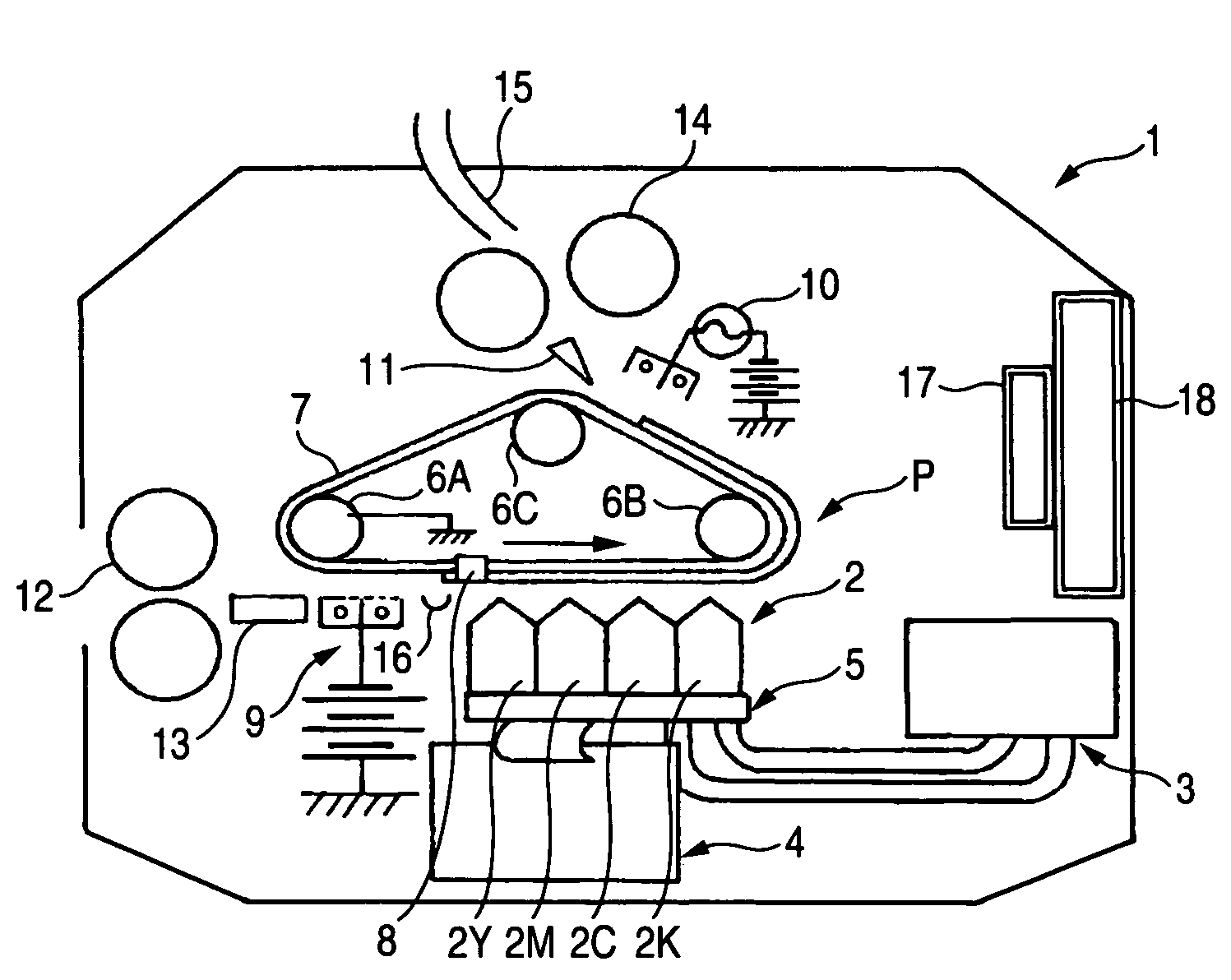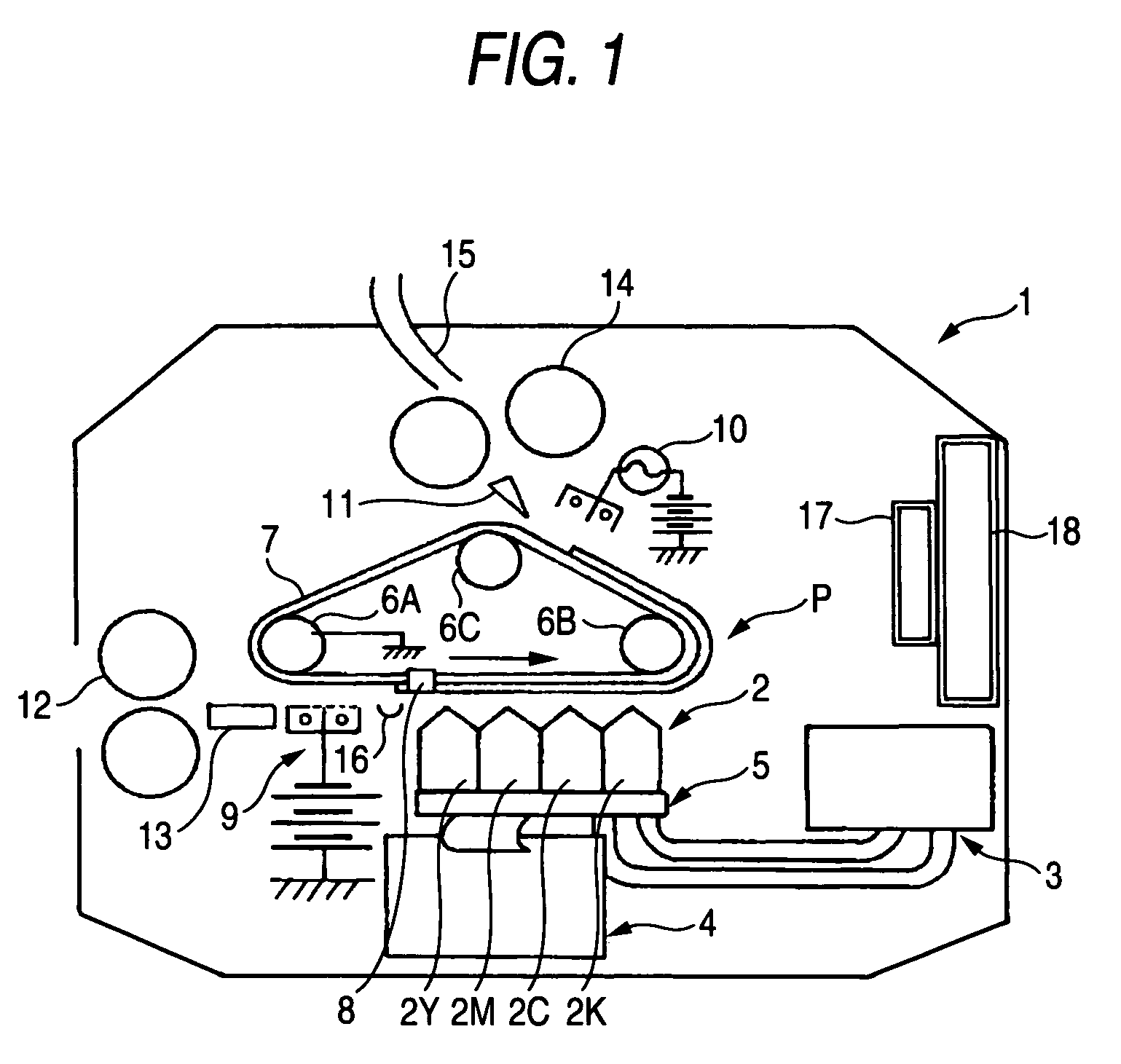Production process of inkjet ink composition and inkjet composition
a technology of inkjet ink and composition, which is applied in the direction of inks, instruments, printing, etc., can solve the problems of blurring or strike-through, reduced printing density, and high permeability of ink into recording paper, and achieve excellent aging stability, easy control of electric charge, and excellent ejection properties
- Summary
- Abstract
- Description
- Claims
- Application Information
AI Technical Summary
Benefits of technology
Problems solved by technology
Method used
Image
Examples
synthesis example 1
Synthesis of Graft Polymer P-4)
[0195]Stearyl methacrylate was radical-polymerized in the presence of mercaptopropionic acid to obtain a carboxylic acid-terminated polymer. The obtained polymer was reacted with hydroxyethyl methacrylate by using dicyclohexyl-carbodiimide as the condensing agent to obtain a polymer of stearyl methacrylate having a methacryloyl group at the terminal. The mass average molecular weight was 10,000. Subsequently, 55 parts by mass of this polymer and 45 parts by mass of p-acetoxystyrene were radical-polymerized to obtain Graft Polymer P-4. The mass average molecular weight was 65,000.
[0196]Other graft polymers exemplified above can also be synthesized in the same manner by changing the combination of corresponding monomers.
[0197]10 Parts by mass of Linol Blue FG-7350 (Pigment Blue 15:3, produced by Toyo Ink Mfg. Co., Ltd.) as the pigment, 80 parts by mass of Isopar G, and 25 parts by mass of a 20 mass % solution prepared by dissolving Graft Polymer P-4 unde...
example 1
Ink Composition IJ-1
[0201]100 Parts by mass of Linol Blue FG-7350 (Pigment Blue 15:3, produced by Toyo Ink Mfg. Co., Ltd.) as a blue pigment and 200 parts by mass of a methyl methacrylate / butyl methacrylate / stearyl methacrylate / trimethylammoniumethyl methacrylate (anion: p-toluenesulfonate ion) copolymer (38 / 47 / 10 / 5 by mass; mass average molecular weight: 10,000; glass transition point Tg: 40° C.) as the resin were preliminarily pulverized and thoroughly mixed in a trio-blender and then melt-kneaded (120 minutes) in a desktop kneader PBV (manufactured by Irie Shokai K.K.) heated at 100° C. to provide a colored mixture. This pigment-kneaded product (colored mixture) was pulverized in a pin mill. Subsequently, 10 parts by mass of the pulverized pigment kneaded product, 80 parts by mass of Isopar G and 12.5 parts by mass of a 20 mass % solution prepared by dissolving under heat Graft Polymer P-4 in Isopar G were pre-dispersed together with 350 parts by mass of 3G-X glass beads in a pai...
example 2
Ink Composition IJ-2
[0209]An ink composition was produced in the same manner as in Example 1 except that in the production of Ink Composition IJ-1 in Example 1, carbon black (MA100, produced by Mitsubishi Chemical Corp.) as a black pigment was used in place of Linol Blue FG-7350 and Graft Polymer P-7 was used in place of Graft Polymer P-4. The volume average particle diameter of pigment resin particles in the ink composition was 1.1 μm. Also, the proportion of fine particles of 0.2 μm or less was 0.1% on the volume basis. The liquid dispersion was observed by a scanning electron microscope, as a result, microfine pigment particles were not observed.
[0210]The physical values of Ink Composition IJ-2 were measured by the same methods under the same conditions as in Example 1. The results obtained were as follows.
[0211]Electric conductivity at 20° C. of ink composition: 140 nS / m
[0212]Electric conductivity of supernatant of ink composition: 49 nS / m
[0213]Electric conductivity of charged p...
PUM
| Property | Measurement | Unit |
|---|---|---|
| particle diameter | aaaaa | aaaaa |
| volume resistivity | aaaaa | aaaaa |
| electric conductivity | aaaaa | aaaaa |
Abstract
Description
Claims
Application Information
 Login to View More
Login to View More - R&D
- Intellectual Property
- Life Sciences
- Materials
- Tech Scout
- Unparalleled Data Quality
- Higher Quality Content
- 60% Fewer Hallucinations
Browse by: Latest US Patents, China's latest patents, Technical Efficacy Thesaurus, Application Domain, Technology Topic, Popular Technical Reports.
© 2025 PatSnap. All rights reserved.Legal|Privacy policy|Modern Slavery Act Transparency Statement|Sitemap|About US| Contact US: help@patsnap.com



